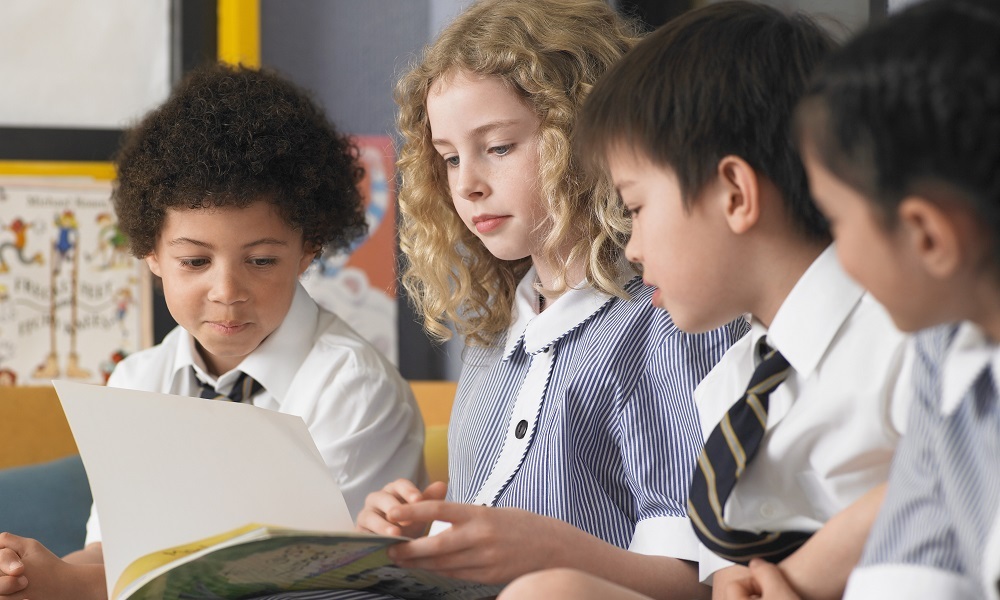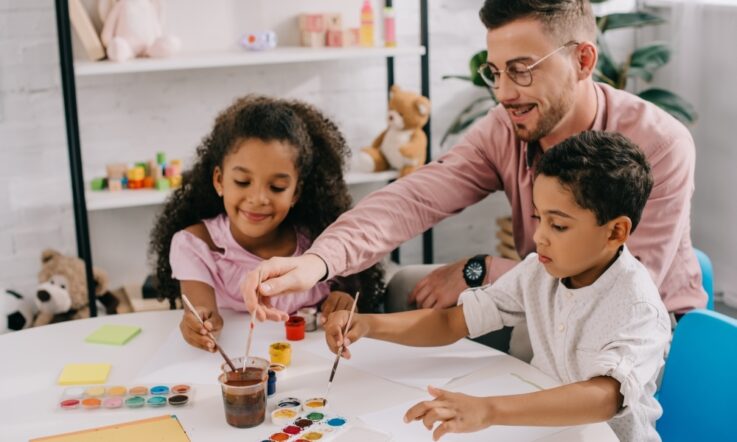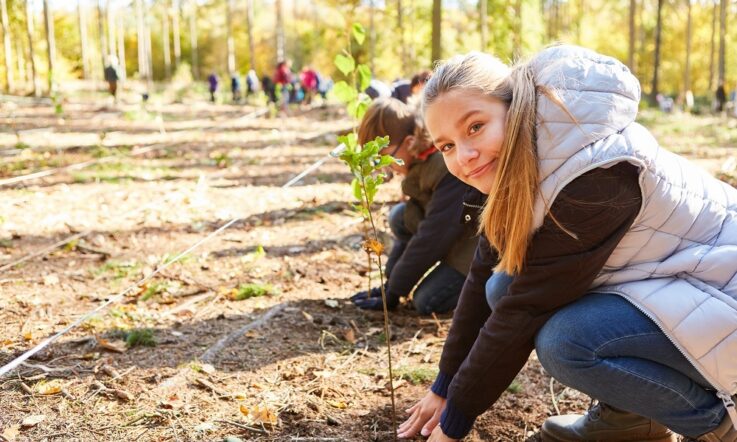This podcast from Teacher is supported by the Victorian Government. Generous financial incentives are available for qualified early childhood teachers and educators to take up positions across Victoria. Relocation support is also available. Learn more about opportunities at vic.gov.au/kinder.
Thanks for tuning in to this episode of Teacher Staffroom, where we catch you up on the latest evidence, insight, and action in education. I'm Dominique Russell.
The latest results from PIRLS (or Progress in International Reading Literacy Study) were released this month. The data sheds light on the literacy achievement of year 4 students in Australia, and in today’s podcast, I’ll take you through what you need to know.
Like all episodes of Teacher Staffroom, I’ll be sharing some other highlights from content we’ve published during the month, and I’ll also be posing some questions throughout the podcast, so feel free to pause the audio as you go, gather some colleagues, and discuss together how these stories might be relevant to your school context. Let's jump in.
As I mentioned, Australian results from the 2021 Progress in International Reading Literacy Study (or PIRLS) have been released. The morning after the results were released, we published an article giving you an overview of the results.
PIRLS has measured trends in year 4 students’ reading literacy achievement every 5 years since 2001. This latest cycle is the third time Australia has participated in PIRLS. Let’s a lot to unpack from these results, and you can read the full article by searching for ‘PIRLS’ (that’s P-I-R-L-S) at our website, teachermagazine.com. In the piece, we discussed what this latest cycle has shown about the impact of COVID-19 restrictions, students’ behaviour and attitudes to reading, the teaching of reading in Australia and international comparisons.
In terms of international comparisons, students in Australia outperformed their peers in 28 other countries, including New Zealand, France and Germany. Australia’s average score was lower, however, than the average scores for 6 other countries, including Singapore, Hong Kong and England (all tested in English), and other top-performing countries, the Russian Federation, Finland and Poland.
If you’re interested finding out more about some of the top-performing countries, back in 2018, we published an article on the reading success in the Russian Federation, where students outperformed their peers in all 50 participating countries and 11 benchmarking regions in the 2016 PIRLS cycle. You can read find the full article by searching ‘PIRLS 2016: Russia's reading success’ at our website.
To unpack some of the results further, we also published an expert Q&A with PIRLS National Project Manager for Australia and ACER Senior Research Fellow Kylie Hillman. In this Q&A Kylie shared some fascinating insights on the results, so again, I encourage you to read the full piece at our website.
What I thought I’d highlight with you now though is the results from a new question included in the survey in this cycle of PIRLS. Teachers were asked about student access to digital devices during their reading instructions, and the results for Australia show that 88% of year 4 students did have access. Here is what Kylie had to say about some other findings related to digital devices and reading.
The majority of Australian year 4 students reported that they spent 30 minutes or less per school day using digital devices to find and read information. In terms of reading performance, students who were using digital devices – either for more than 30 minutes or 30 minutes or less – tended to score higher on the reading assessment than students who reported spending no time using these devices to read and find information for schoolwork. We also compared responses to this question for different groups of students and found some interesting differences. Male students, for example, seem to report higher usage of digital devices for schoolwork than female students – 30% of male students reported spending more than 30 minutes a day on devices for their schoolwork compared to 24% of female students.
So, this discussion brings me to a question to think about. In your classroom, how much time do students spend using a computer or tablet to find and read information for schoolwork on a normal school day? Is there a difference between male and female students?
Coming up, we’ll look at a new Australian project researching Problem Based Learning in schools, more reading content, and a ChatGPT lesson activity. First, here’s a quick message from today’s sponsor.
Victoria needs more Kinder teachers and educators. Make the move and you’ll be rewarded with $9000 plus relocation support. So now you can turn a rewarding career into a great adventure. Learn more at vic.gov.au/kinder. Best start, best life. Authorised by the Victorian Government, Melbourne.
If you’re considering conducting your own action research or entering into a collaboration with academics, you’ve probably got lots of questions about what’s involved and how it differs from traditional professional development.
In a recent 3-part article series, Associate Professor Kathy Smith and Dr Jennifer Mansfield shared the details of the Exploring Problem Based Learning in Schools linkage project which actively positions teachers as co-researchers with academics. The research will produce a pedagogical framework for Problem Based Learning in STEM education, and in the first article, Kathy and Jennifer share some quotes from teacher co-researchers reflecting on 4 key aspects of their experience. The 4 aspects were: taking ownership of decision making, feelings of uncertainty, co-constructing knowledge and allowing time for learning. Here’s one quote I’d like to share with you from one of the teachers involved:
I noticed from the start... We were not treated like passive learners. At first, that made me feel a bit uncomfortable because we’re like, “What have you given us? What can we take back to the classroom?” … However, this kind of pushed us to try different things, grapple with the problem, consider how we can best implement PBL in different ways in the classroom, or across different subjects and content areas.
Thinking about this topic then, here are a few questions to consider. Are there opportunities for staff at your school to develop a partnership with a local university? What about working with staff from another school? How could these partnerships benefit your own classroom practice?
A little while ago, you may have tuned in to a special podcast episode from us all about ChatGPT. The tool has been around for a little while now, and we’ve started to see some teachers use it in their school settings, whether as a planning tool or with students during lessons.
Steve Brophy, Director of Digital Transformation at Ivanhoe Grammar School in Victoria, is one of these educators, and our Deputy Editor, Rebecca Vukovic, spoke with Steve in a recent article to discuss how he’s integrated the use of ChatGPT into a lesson activity with his year 9 Transformative Technology class.
The activity is called ‘Would you lie to me?’ and involves testing the fallibility of ChatGPT. In the activity, students take a topic they consider themselves to be an expert in and ask ChatGPT to provide information on that topic. Then, they need to see if they could find flaws in the information shared. For example, one student ChatGPT about the Australian Football League player, Dustin Martin. Here’s what Steve had to say about that student’s experience.
We had one where [ChatGPT stated that] 16 of the clubs are in Australia and 2 are in Queensland. So, it’s basically saying that Queensland is not a part of Australia and so it tripped itself up … so, they were experts asking simple questions and their job was to trip it up. They were deliberately trying to find errors and some people just couldn’t find it … but others pretty much found it straight away.
Here’s a question on the use of ChatGPT to reflect on, on your own or with colleagues. How will you be ensuring that students learn which parts of ChatGPT to trust, and which to be wary of? Is the ‘Would you lie to me?’ activity something you’d consider doing with your own students?
And finally for this episode, for those of you looking to consume more information and research on the topic of reading, I thought it would be useful to mention the most recent instalment of our Researching Education: Five further readings series, where we’re delving into the topic of supporting reading. If you haven’t heard of it before, in this series, we take a look at some further readings available on a particular topic, including open access research papers from various online databases, and Teacher archive content you might not have come across yet.
On supporting reading, we’ve included a paper on educators’ perspectives about teaching and supporting students with difficulties in reading and an open access book titled Putting PIRLS to Use in Classrooms Across the Globe. Be sure to check out the article at our website to see the full list of resources.
That's all for this episode. You’re now all caught up on the latest evidence, insight and action. Links to all the content and the resources I’ve mentioned will be in the transcript of this podcast available over at our website, teachermagazine.com.
Subscribe to our podcast channel wherever you get your podcasts from, so you can be notified of any new episodes as soon as they land. And, while you’re there, we’d love if you could rate and review us.
This podcast from Teacher
is supported by the Victorian Government. Generous financial incentives are available for qualified early childhood teachers and educators to take up positions across Victoria. Relocation support is also available. Learn more about opportunities at vic.gov.au/kinder.



